According to Wikipedia, “Heteroscarus acroptilus, the Rainbow Cale, is a species of weed whiting endemic to Australia where it is found in marine waters along the southern coast. It inhabits rocky reefs that have plentiful growth of brown algae and also in beds of seagrass, particularly those of the genus Posidonia. It occurs at depths of from 1 to 15 metres (3.3 to 49.2 ft). This species grows to a length of 24 centimetres (9.4 in). It can also be found in the aquarium trade. This species is the only known member of its genus.” This photo features on the Wikipedia web page: –
A male Rainbow Cale, Odax acroptilus.
(Andrew J. Green / Reef life Survey)
(From Wikimedia Commons, the free media repository)
According to the Fishes of Australia, “Male Rainbow Cales (CAAB Code:37385010) have two rows of broad dark blotches along the sides, iridescent blue lines on the head, a blue submarginal band on the dorsal, anal and pelvic fins, and elongate anterior dorsal-fin spines. Females and juveniles are yellowish to greenish or reddish-brown with dark markings on the sides. Distribution – Mostly found on exposed rocky reefs in areas covered with brown macroalgae and with broad-leafed seagrasses, such as Posidonia.
This photo by Graham Short, our Overseas Ambassador, features on the web page: –
(It also features at http://www.fishesofaustralia.net.au/home/genus/1014 .) There is also a link to a video of a Rainbow Cale on the web page.
During August, we received this email message from a Robert Sloman: –
“Brian Saunders’ book, published by CSIRO Publishing in 2012 titled “Discovery of Australia’s Fishes” used an illustration on the cover of a painting by Edgar R Waite, my (great) grandfather. The fish is called a rainbow fish and may be extinct, but a modern fish called the Rainbow Cale may be extant.
My mother is Isabel Sloman nee Waite.
I have had a reproduction of that original painting made to present to my mother on her 85th birthday.
I attach a copy of the reproduction here, as it might be of interest to your Members.
The reproduction is on 24×18 inch paper. Four copies have been made to share with my siblings.
Best regards, Robert Sloman”
I quickly replied to Robert, as follows: –
“Hi Rob
What a surprise it was to receive your email message offering a reproduction of your (great) grandfather’s illustration to our members. And the tale about your (great) grandfather and the fish is very interesting. I’ll pass your offer on to our members, along with the story. Rainbow Cale certainly is extant. The illustration appears very Rainbow Cale-like, apart from the colouration. When would your (great) grandfather have done the illustration? Would he have known what the ‘true’ colouration should have been? Colouration can be quite variable though. I, myself use the term Rainbow Fish for Rainbow Cale. They are very beautiful fish, esp. males. Were any scientific (Latin) names used for the illustration?
Regards, Steve Reynolds, President MLSSA”
Rob’s reply was (in part): –
“Thanks for your e-mail. The attached written excerpt shows the Latin name of the fish Edgar Waite painted.
Heteroscarus acroptilus, but as shown on the actual image, the name is (Heteroscarus filamentosus).
The illustration appears in the frontispiece of a book published by the South Australian Museum in 1921. Titled “Illustrated catalogue of the fishes of South Australia” It was that book that I found a few years ago on Amazon and which I acquired.
That page is reproduced here and I’ve snipped a copy of the page and attach it as a jpg.
Edgar R Waite’s illustration in the frontispiece of a book titled “Illustrated catalogue of the fishes of South Australia” published by the South Australian Museum in 1921
(Source: http://www.biodiversitylibrary.org/page/13918522 *)
* (The web page actually features a copy of “Records of the South Australian Museum Vol.II” which was edited by the Museum’s Director, Edgar Waite. So Edgar was the Museum’s Director in 1921. More on this topic later.)
“I don’t know how true the colouration of this illustration is. It’s the only colour illustration of his that I’ve been able to locate, and the colour balance on the front of the CSIRO publication is different from this one.
I am interested to find the original to see if the scanned representation is accurate to the painting. The original art may or may not exist, I suppose. 1921 is a fair while ago.”
It was about this time that I messaged Roger Swainston of ANIMA, saying “I’ve been offered the use of this old drawing of a Rainbow Cale said to be by Edgar Waite (but it has Liz Fuller’s name). The colouration is unusual to me. How does it compare with any of your drawings?”
Liz Clayton Fuller’s ‘faithful copy’ of the original painting by Edgar R Waite
Roger’s reply was, “The pattern is more or less right; the colour is probably taken from a dead specimen hence the red colour on the head which is usually white, when alive.” I responded, “Yes, I believe that the artwork is of the cast of a fish.”
I replied to Rob, saying “Thanks Rob, The . . . Art seems to be from a cast of the fish. Roger Swainston believes that the colours are those of a dead fish. What’s the connection with Liz Fuller? filamentosis is a synonym for the species. So we have your permission to use the artwork OK? If so, thanks for that. I’ll put an article together about it then.
Cheers, Steve”
Rob’s response was, “I had acquired the 1921 book several years ago and had of course noticed the colour plate, then the CSIRO published Brian Saunder’s book that also used that illustration. Liz Clayton Fuller is a young watercolor painter my wife and I met here in Seattle. Her particular interest is illustrations of birds. You can see some of her work (at) Liz Clayton Fuller Art.
I approached her with the idea of commissioning her to reproduce the fish in a larger form as a gift for my Mum, who lives in Melbourne. Liz accepted and while also continuing her studies, completed the commission over a six month period, presenting it just a few days ago at a dinner party at our home where my older brother got a Giclee copy, one of four.
(According to Wikipedia, Giclée is a neologism coined in 1991 by printmaker Jack Duganne for fine art digital prints made on inkjet printers. The name originally applied to fine art prints created on IRIS printers in a process invented in the late 1980s but has since come to mean any inkjet print. It is often used by artists, galleries, and print shops to suggest high quality printing but since it is an unregulated word it has no associated warranty of quality.)
While I was writing to you, I also have written to and heard back from the South Australian Museum with whom I shared the story. SAM has the original work and have now sent me a scan of it. Coloration is quite close to Liz’s interpretation.
Liz signed her work and the Giclee copies on the reverse.
I would be delighted if you feel the story is worthy of an article, but I suggest that attributing this work as a faithful copy of original ERW (Edgar Ravenswood Waite) painting by Liz Clayton Fuller would be appropriate.
I will forward you the email from Francesca of SAM who has been most helpful in confirming that they have the original in their Archive and who has taken the trouble to send me a scan.”
The email from Francesca Zilio of the SA Museum read (in part): –
“Dear Mr Sloman, Thank you for your email relating to one of your great grandfather’s drawings. Edgar Ravenswood Waite was an exceptional illustrator and contributed significantly to science. I have attached a scan of the original drawing which we have in the South Australian Museum Archives. The original measures: 32.5cm x 20cm. The measurement incorporates Waite’s signature and printing instructions.
Francesca Zilio, Manager, Information Services, South Australian Museum”
A few other emails were exchanged on the matter between Rob and myself, but they appear to be superfluous for this article.
Here is the scan of the original drawing from the South Australian Museum Archives:
A scan of the original painting by Edgar R. Waite
(Courtesy of the SA Museum)
I was able to download most of the pages of the Records of the SA Museum Vol.II from the Biodiversity Heritage Library. I am keeping them on file as part of our library. The contents include “Catalogue of the Fishes of South Australia” by Edgar R. Waite, plus several other titles by him. He was the Director of the Museum at the time (1921-4?). Waite’s name is accompanied by the initials FLS (Fellow of the Linnean Society?) & CMZS (?).
(It is stated in the Records of the SA Museum Vol.II that Herbert M. Hale was Edgar R. Waite’s assistant. According to Trove , “Herbert Mathew Hale was a cadet at the South Australian Museum from 1914, the Director’s Assistant from July 1917, Assistant in Zoology from 1922, Zoologist (Crustacea) from 1925, Museum Curator (director) 1928-60.”)
Hale wrote “The Crustaceans of South Australia Parts I and II 1927-1929” (No.1003 in our library). It seems that he also wrote several articles in the Records of the SA Museum between 1931 & 1963, including “Australian Cumacea, No.15 the Bodotriidae* (cont.)” in 9(2): 107-25 (1949).
* (A family of crustaceans.)
Both a male and female Rainbow Cale are illustrated on page 137 of the Records of the SA Museum Vol.II, along with the comment “They are one of our most gorgeous fishes”.
Here is a screenshot of the page: –
The male and female Rainbow Cale illustrations on page 137
of the Records of the SA Museum Vol.II
The 1920s illustrations featuring in “The Fishes of South Australia” in the Records of the SA Museum Vol.II were still being used almost 60 years later when the facsimile reprint of “The Marine and Freshwater Fishes of South Australia” was published in 1980, including Edgar Waite’s Rainbow Cale illustrations.
In the Records of the SA Museum Vol.II ,“Catalogue of the Fishes of South Australia” is followed by “The Fishes of South Australia”. This work was the forerunner to “The Marine and Freshwater Fishes of South Australia” which “was first published in 1962, under the authorship of Mr TD Scott, then Curator of Fishes, South Australia Museum”.
According to “The Marine and Freshwater Fishes of South Australia” (2nd Edition), “A forerunner had been published in 1923 in the same series by the late Mr Edgar R. Waite, a former Director of the South Australian Museum.”
“The Marine and Freshwater Fishes of South Australia” was the first ‘bible’ for fish identification by enthusiasts such as divers and aquarists during the 60s, 70s & 80s. The Second Edition (Scott, Glover & Southcott) came out in 1973. A reprinting (facsimile reprint) then came out in 1980. It was said to have been “issued at short notice” pending a forthcoming “fully revised third edition”.
This facsimile reprint incorporated the “correction of some errors, misprints and omissions found in the 1974 edition” in the preface. The only other obvious change was the inclusion of several colour plates in the middle of the book.
We have copies of both versions of the Second Edition in our library, but both of these books have started to perish badly. The pages are just withering away, making the contents somewhat unreadable.
I don’t believe that a Third Edition of “The Marine and Freshwater Fishes of South Australia” ever eventuated. I discussed this matter in my 2008 Journal article titled “A Summary of Our Society’s Involvement in the SA Museums’s Fish Survey of 1981 (and two books published as a result of that survey)”.
“The Fishes of Australia’s South Coast” by Goman, Glover & Kuiter was published in 1994, in place of a third edition of “The Marine and Freshwater Fishes of South Australia”. It was later ‘replaced’ by “Fishes of Australia’s Southern Coast” edited by Dr. Martin Goman, Dianne Bray and Rudie Kuiter.
It therefore seems to be reasonable to say that Edgar R. Waite’s work on fishes resulted in several other books (& editions):
“The Marine and Freshwater Fishes of South Australia” – Two editions (1962 & 1973) and one facsimile reprint (1980).
“The Fishes of Australia’s South Coast” by Goman, Glover & Kuiter (1994).
Fishes of Australia’s Southern Coast edited by Dr. Martin Goman, Dianne Bray and Rudie Kuiter (Winner of a Whitley commendation for best zoological reference).
Our thanks go to Robert Sloman for providing us with the Rainbow Cale paintings and some of the background regarding Edgar R. Waite. Many thanks also go to the other contributors for their help and assistance: Liz Clayton Fuller, Roger Swainston, Graham Short and Francesca Zilio.


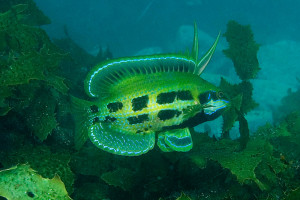
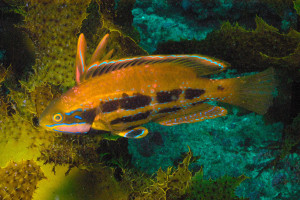
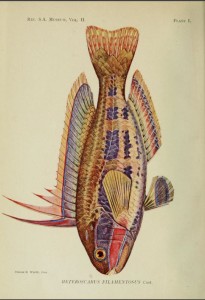
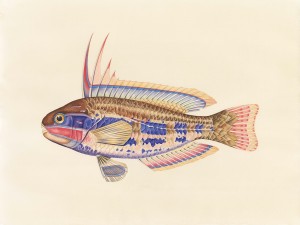
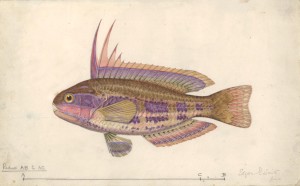
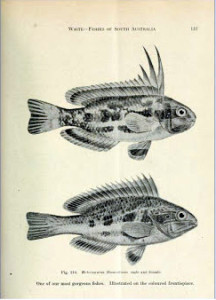
[…] * (As stated above, “Pipefish, Museums, Marine Naturalists and Fish Conservation” by Dr Robert Browne states, “In 1923 Mr Edgar Waite published a catalogue of fishes of South Australia.”Also, see my article titled The Work of Edgar Waite.) […]